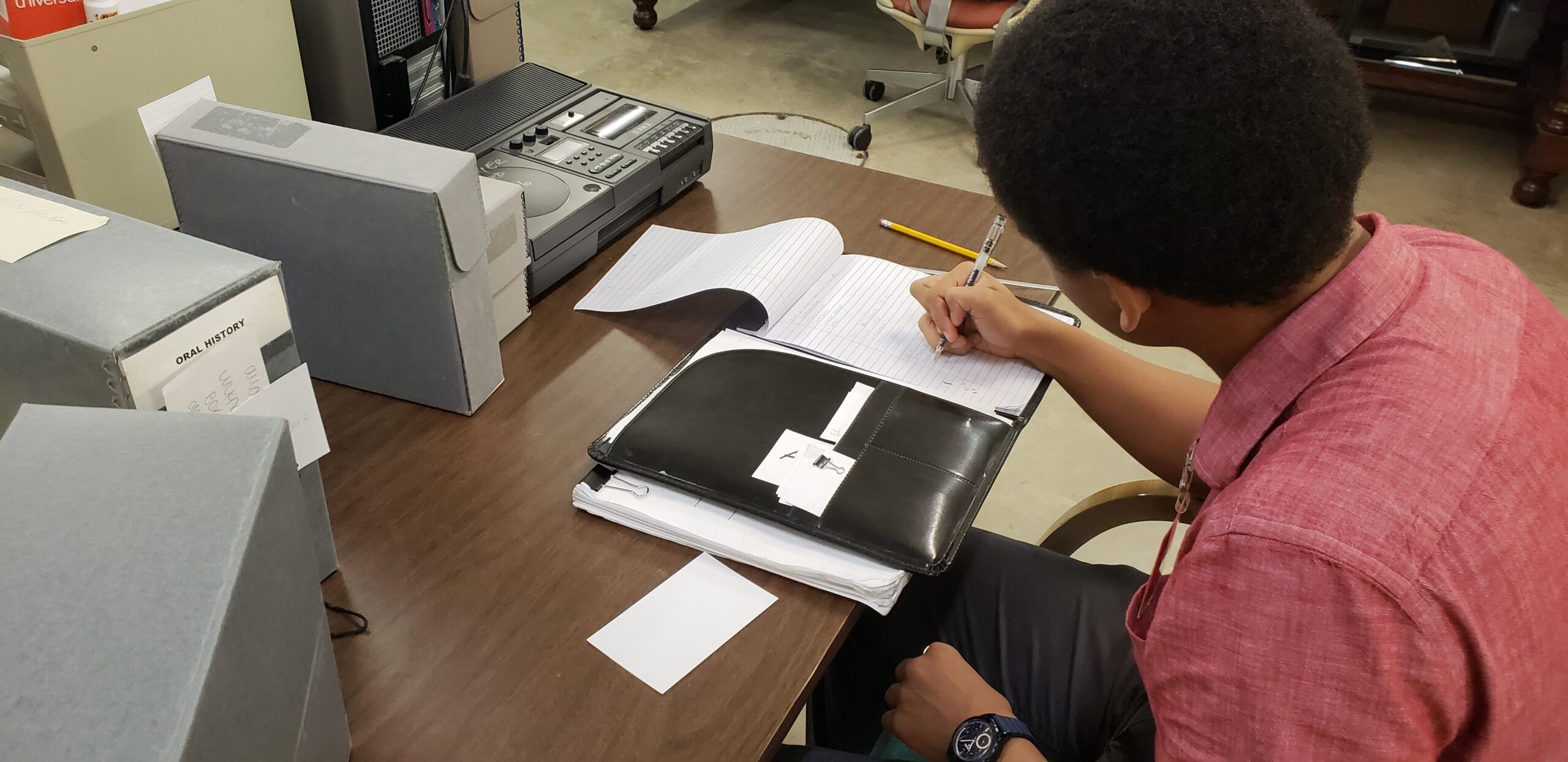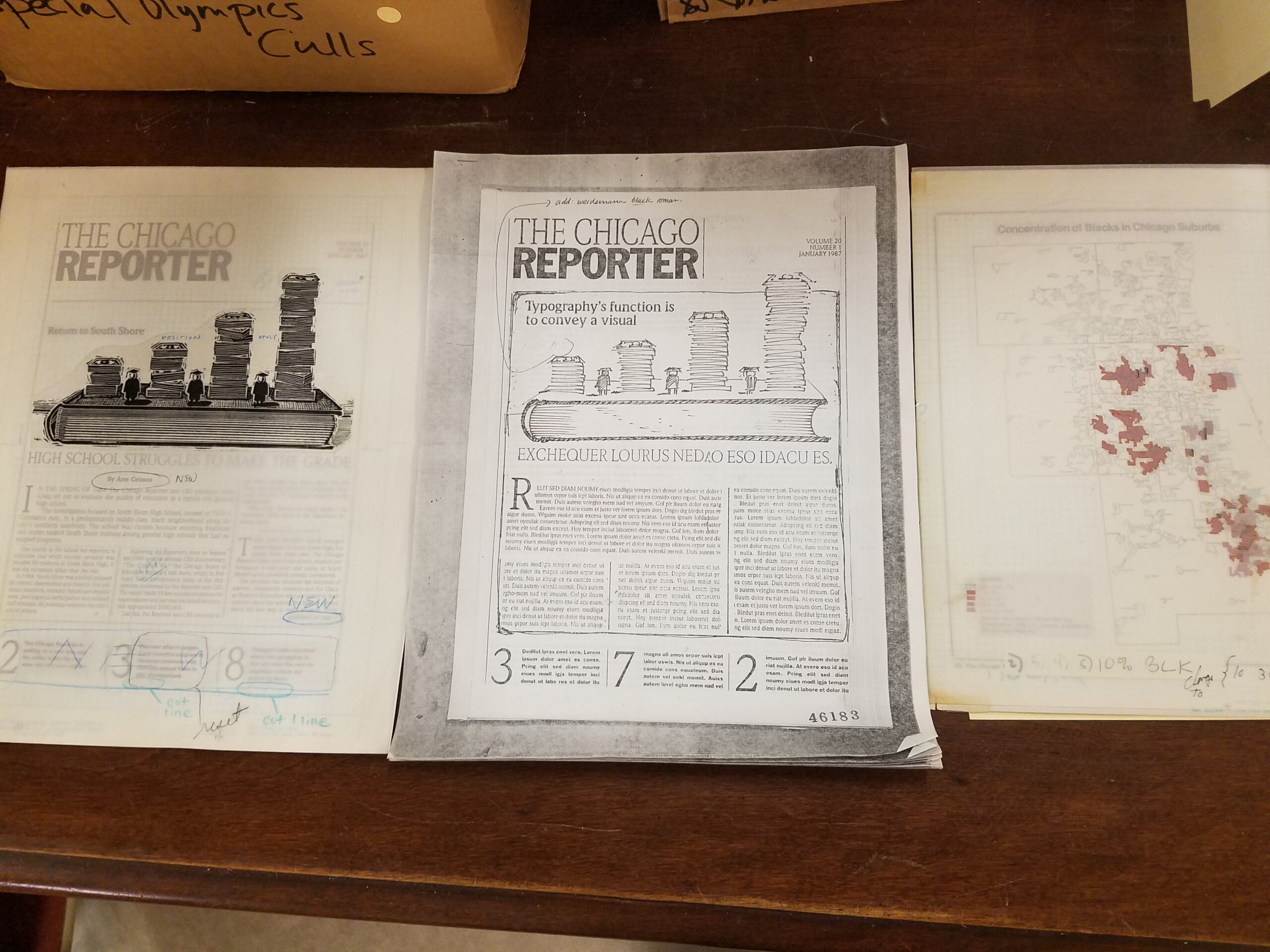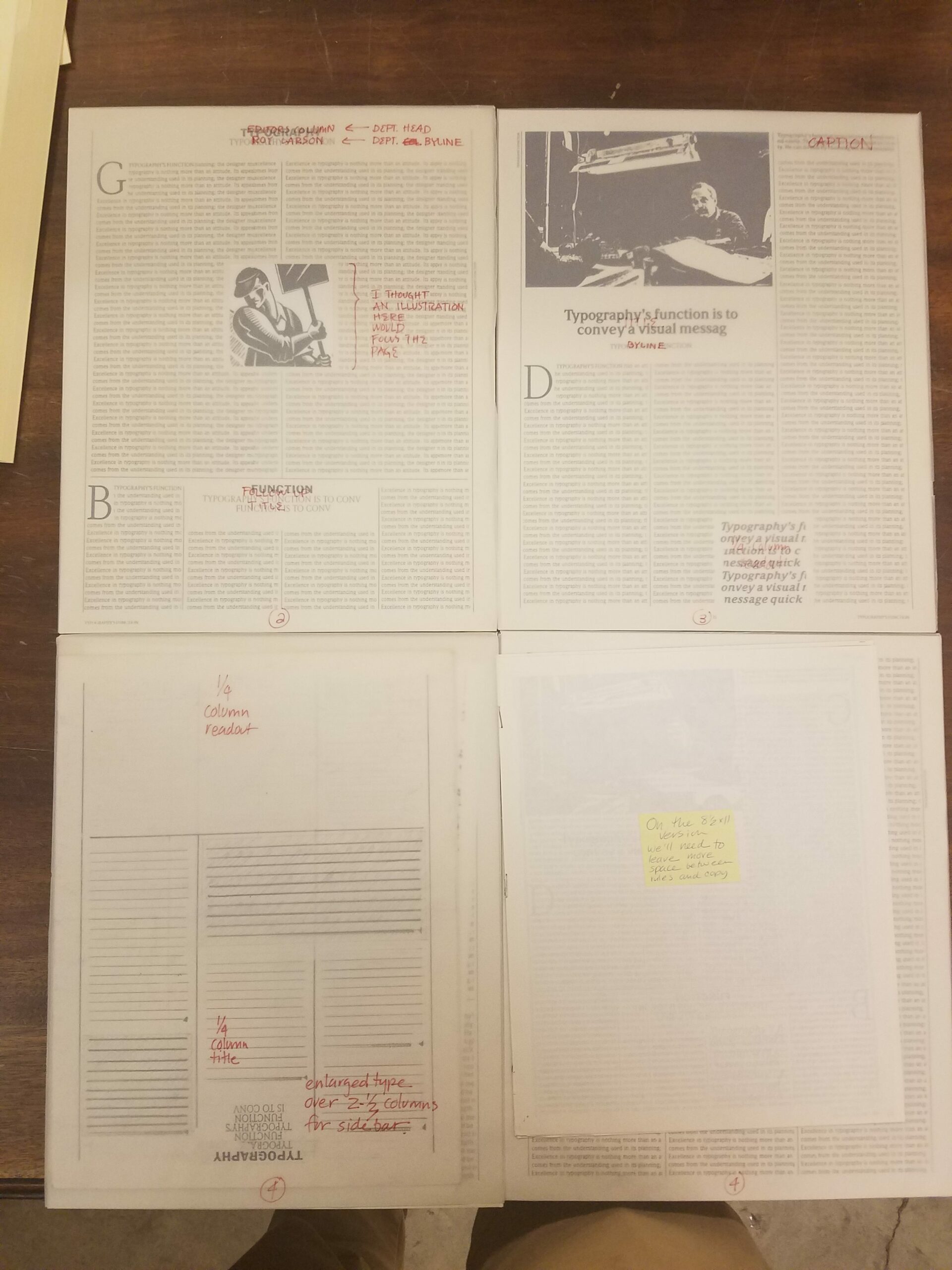In this blog post, CHM collections intern Chris Johnson writes about his experience processing the collection of The Chicago Reporter under the supervision of senior archivist Julie Wroblewski.
Last summer, I interned at the Chicago History Museum via the Black Metropolis Research Consortium’s Archie Motley Archival Internship Program. The Black Metropolis Research Consortium (BMRC) is a Chicago-based membership association of libraries, universities, and other archival institutions that helps make accessible its members’ holdings of materials that document African American and African diasporic culture, history, and politics, with a specific focus on materials relating to Chicago.

CHM collections intern Chris Johnson writes notes while processing The Chicago Reporter collection.
During my internship, I got hands-on experience with several aspects of museum work, specifically what it’s like to be an archivist. Previously, I had understood museums only from the perspective of a visitor. When given the opportunity to take part in the processing of a collection, I was met with the reality of just how little I knew and was excited to correct this with my summer task of processing the records of The Chicago Reporter.

Copies of The Chicago Reporter front pages with edits as well as a map detailing the black population of Chicago’s suburbs. The Chicago Reporter papers, oversize folder 1
The Chicago Reporter is a periodical founded in 1972 by civil rights activist John A. McDermott, whose focus was to report and discuss race and poverty within Chicago. To process the collection, I started by surveying the materials for content and condition and then organizing them into categories, known as series, so a researcher could easily go through the collection with sufficient understanding of what was there and how to navigate it. I learned that it was important to maintain respect for the original order of the materials, ensuring that the way it was organized when it was acquired is preserved as much as possible. Seeing that order gives researchers more context for the materials and potentially some insight into how the organization conducted its work.
While arranging the materials, certain pieces stood out to me, such as a list of subscribers from the mid- to late 1970s and templates for how to design the publication, including large plastic and paper graphics demonstrating how articles were to be orientated on the page with relation to pictures. The annual readership surveys gave a snapshot of their readers’ feelings (and thus part of society’s) at a given moment in time. The handwritten draft revisions and interview notes showed how research developed into a final published article and highlighted how thorough the publication was in its production of the finished product.

Pages of The Chicago Reporter with copyedits. The Chicago Reporter papers, box 29, folder 3
After arranging the collection, I ventured into the final stage of processing the collection: description. To do this, I learned to encode a finding aid, or collection inventory, in XML using a set of standards called Encoded Archival Description (EAD). This turns the finding aid into a document that can easily be put on the web and shared with other online catalogs to increase its discoverability. By working with these thirty-year-old documents, I gained an intimate connection with the collection and an insight into what Chicago was like in the late 1970s to mid-1980s.
The Chicago Reporter papers can be accessed through the Chicago History Museum’s Abakanowicz Research Center.